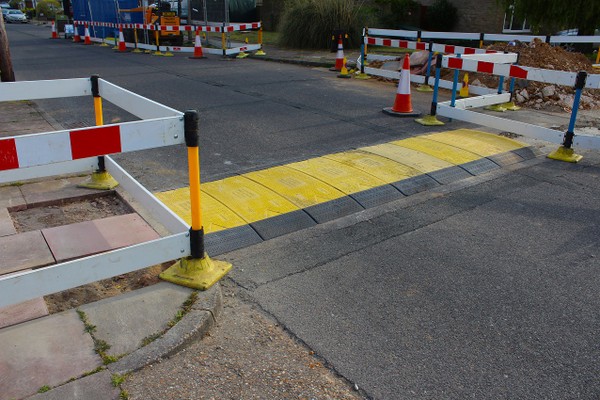Road Plate Steel Fundamentals Explained
Wiki Article
Everything about Steel Road Plate
Table of ContentsRumored Buzz on Road PlateThe smart Trick of Steel Road Plate That Nobody is DiscussingThe Best Guide To Steel Road PlatesThe Buzz on Steel Road Plate
Box culverts are affordable due to their strength as well as monolithic action and different structures are not needed. It is used in unique instances, weak foundation.Common compaction requirements for a project may vary from 90% to 95% of basic Proctor for non-structural areas to 98% or even more of customized Proctor for heavily loaded pavements. Proctor tests are dirt moisture-density relationship tests that establish maximum dry thickness (the device weight of the dirt minus the weight of water) and the optimal water material for dirt examples.
Water is added to four to six sections of the dried dirt sample in raising quantities. The completely dry thickness increases as the added dampness lube the dirt particles and make it possible for higher compaction from the very same used energy.

Road Plate Can Be Fun For Everyone
The moisture web content is established making use of a gas-pressure wetness tester or easy field dry-back approaches. Density and also moisture outcomes are plotted versus the original research laboratory contour to verify a match. In scenarios where lab details is not offered, the field point results may be compared to a family members of contours put together from local or local soil information to pick the best maximum thickness as well as optimum moisture contour.A soil compaction test makes use of one of several techniques to gauge the dry density as well as dampness content of the soil in area. The three most typical are gone over here - road plates. Arise from these field tests are contrasted to the Proctor examination results of the same dirt established busy as well as the proportion is expressed as the percent compaction.
1ft (2,830 g/cm). Density test devices such as mallets, scoops, chisels, and sample bags are used during excavation. All the excavated material is very carefully gathered as well as saved in an airtight container. The pre-weighed Sand Cone Density Device is inverted onto the base plate and also the steel cone is snuggled into the base plate opening.
Afterward, the partially filled device is weighed once more, and the quantity of the test hole is calculated by dividing the mass of the sand filling the hole by the bulk density more helpful hints of the sand. The wet weight of the recovered excavated soil is divided by the test hole volume to identify the wet thickness.
The Best Strategy To Use For Road Plate Steel
The percent compaction for the field thickness examination is determined by dividing the dry density of the soil by the optimum completely dry thickness from the proctor examination. Pros, Cons, Accurate as well as dependable; a long history of approved usage, Examinations might take thirty minutes or even more to finish, ASTM common test method, Heavy devices in the area might require to pause operation briefly, Does not require substantial training, Alternative examinations have to be used where considerable quantities of +1 - road plates.
The tests are a bit less complex to do than the sand cone and can be repeated promptly since the water is maintained in the vessel. Pros, Disadvantages, Accurate and trustworthy; a long background of approved usage, Tests may take 15-20 mins or even more to complete, ASTM basic examination technique, Balloon membrane layers can penetrate during screening, Does not need comprehensive training, Meant for fine-grained or granular dirts without appreciable amounts of rugged product, No licensing or permitting needed for usage, Need to not be used to examine soft saturated, highly plastic dirts, Several tests can be done without altering density media, All dug deep into product needs to be carefully removed, Tools is affordable Wetness material as well as device weight have to be performed on kept dirt examples from either a sand cone or rubber balloon examinations to complete estimations for dirt compaction.
The graph listed below shows a few different approaches that can be utilized for wetness resolutions and also there are a selection of ranges and also balances that get more can be made use of for weighing soil samples in laboratory or field setups. Nuclear density assesses establish soil density by measuring gamma radiation transmission between a probe having a radioactive Cesium 137 (or various other) source and also Geiger-Mueller discovery sensing units in the base of the gauge.
The Of Road Plate Steel
Dirt dampness is measured at the very same time making use of a different resource important site of Americium 241. A steel rod is driven right into the dirt at the test site, forming a pilot opening. The probe consisting of the contaminated resource is lowered up to 12in (305mm) into the pilot opening, and also radiation transmission is gauged for one min.
Report this wiki page